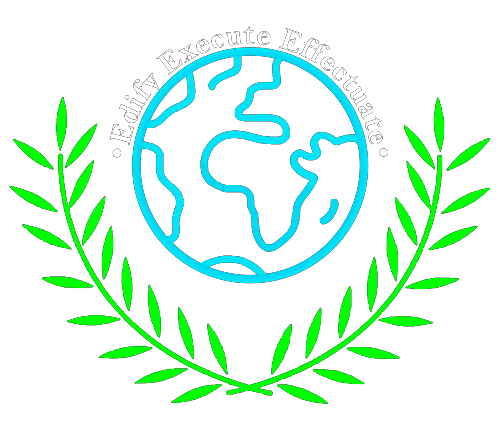Authors: Anamika R, Anaswara Obrin, Sreelakshmi PM. 1.Introduction Menstrual health is a fundamental aspect of women’s well-being, yet millions around the world continue to face barriers to accessing safe, affordable, and hygienic menstrual products. These barriers are often rooted in financial strain and social stigma surrounding menstruation. In many low- and middle-income countries, particularly in rural or underserved areas, menstruators are forced to resort to unsafe alternatives due to the high cost and unavailability of menstrual health products. The result is a pervasive cycle of “period poverty,” with consequences that extend beyond physical discomfort, impacting education, mental health, economic productivity, and social inclusion. This paper explores the role of financial constraints and social norms in shaping menstrual health expenditure and access. Drawing on both secondary data and a primary survey of urban women in India, the research highlights the disparities in menstrual product accessibility, spending patterns, and awareness across different income groups and age brackets. It also examines the challenges of adopting sustainable menstrual products and assesses the effectiveness of existing government schemes and private initiatives. By identifying key gaps in awareness, affordability, and accessibility, this study aims to provide actionable recommendations for policy and community-level intervention. 2. Literature Review Period poverty is an issue that is rooted in economic disparity and gender inequality. It reflects a broader systemic issue where essential health needs of menstruators, especially women and girls, are often overlooked. According to a World Bank Report, in 2022, over 500 million women globally lacked access to menstrual products and adequate facilities for menstrual hygiene management. An overview report for Low and Middle-income countries estimates 78% of menstruators use purpose-made menstrual health products, which include single-use pads and tampons, with reusable options remaining underutilized. The annual cost of such products amounts to $28.8 billion, with 99% of costs attributed to single-use items. Highlighting a significant opportunity to promote reusable menstrual products, which are more cost-effective and environmentally sustainable in the long term. (S.K et al,.2024). However, the uptake of reusable products remains low due to a lack of awareness, unavailability and social stigma. In India, the situation is alarming as 12% of women cannot afford period products. NFHS data show that in 2021, approximately 50 percent of women aged 15-24 years still used cloth for menstrual protection. In rural areas, many women resort to unsafe alternatives such as rags, sand, hay, and ash as alternative methods due to the lack of availability of products. This increases the risk of urinary tract infections (UTIs) and other health complications (Wilson, 2022). While the average cost of menstrual products per month is Rs. 300, this constitutes a significant burden for lower-income groups, particularly when the average daily wage remains around Rs. 180. Given that the exorbitant cost of period products is a gruesome burden on the lower-income groups. Around 23 million girls drop out of school annually due to the lack of safe and sanitary menstrual hygiene management, including access to products and a lack of awareness about menstruation. (Wilson,R.2022) In response, international and national organizations have introduced initiatives aimed at improving access and affordability. The World Bank suggests removing market entry barriers for the private sector companies to improve competition and access. Organizations like Zana Africa demonstrated a successful model by distributing sanitary pads and health education, which is supported by the Kenyan Teacher Service Commission. Similarly, in India, social enterprises like Aakar Innovations have empowered women to manufacture and distribute affordable, high-quality sanitary napkins, while also raising awareness about menstrual hygiene management. Their “Anandi” pads serve as a locally produced, low-cost and eco-friendly alternative. On the policy front, India has taken several steps towards improving menstrual health: Rashtriya Kishor Swasthya Karyakram (RKSK), launched in 2014 by the Ministry of Health and Family Welfare, focuses on raising awareness on menstrual hygiene among adolescent girls. ASHA workers distributed subsidised packs of sanitary napkins at Rs. 6 each. Under the Pradhan Mantri Bharatiya Janaushadhi Pariyojana (PMBJP), over 8,700 Janaushadhi Kendras offer oxo-biodegradable pads at just Rs. 1 per pad (Roy, 2024). While the measures adopted by the government shall be appreciated doubt still lingers on the effective implementation of these schemes. The supply of pads at health centers is reported to be irregular, which erodes the effectiveness of the scheme. The lack of awareness regarding the government initiatives promoting the use of menstrual products prevents women in need from availing them (S.K et al.,2024). The consequences of these systemic failures are not only physical but also social and psychological. Poor menstrual hygiene can lead to infections and reproductive health issues (Babagoli et al., 2022). At the same time, providing good access to menstrual hygiene products reduces the risk of infections and teen pregnancies and increases fertility. A sanitary pad intervention in Ghana found that after six months of free sanitary pad provision and puberty education, girls missed significantly less school (Montgomery et al.,2012). The word is synonymous with injustice and inequity (Jaafar et al.,2023). Affordability is a strong barrier to access to menstrual products, particularly for poor women. The implicit sexism and underlying gender inequality in the high pricing of essential female hygiene products is not unnoticed (Miller et al.,2024) 3. Methodology The cross-sectional analysis was conducted using primary data through questionnaire based web survey on urban women. Data has been collected from websites of The world Bank, The UN and the WHO. Articles from Google Scholar, National Institute of Health, International Journal of Reproduction, Contraception, Obstetrics and gynecology, Ujaas, Rashtriya Kishor Swaasthya Kaaryakram website for the comprehensive literature review. 4. Analysis A survey was conducted with 70 urban women aged between 20 to 50 years, segmented into three age groups: 20–30, 30–40, and 40–50. The respondents were categorized by household income: Low income: ₹15,000–₹35,000 Middle income: ₹35,001–₹75,000 High income: Above ₹75,000 Respondents also represented a diverse occupational range: employees (45.7%), self-employed, homemakers, students, and others. Educational backgrounds varied, with the majority holding postgraduate degrees (57.1%). This was to check the incidence of meeting menstrual requirements of non-earning female members











